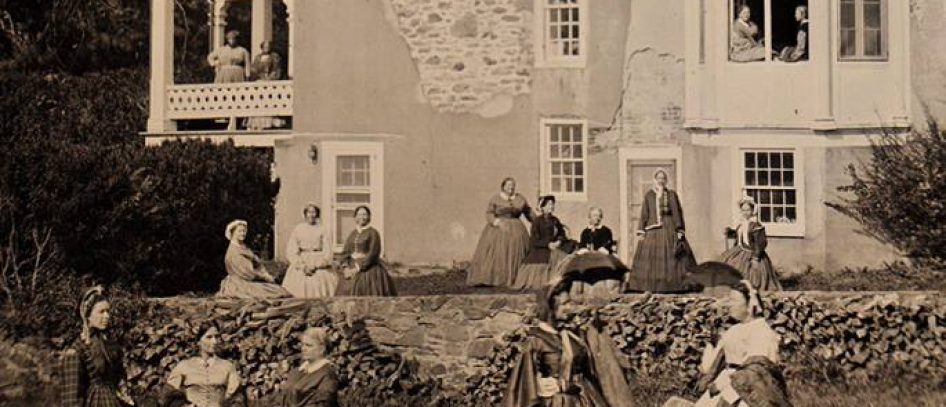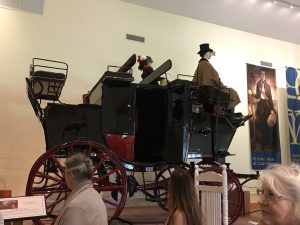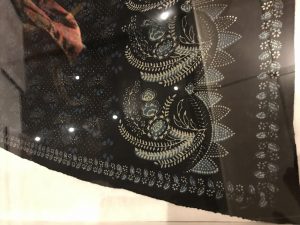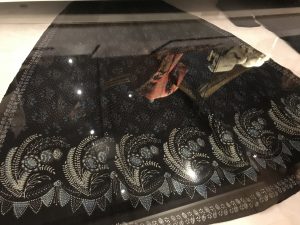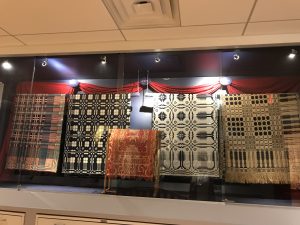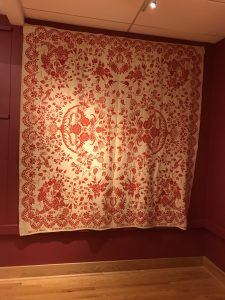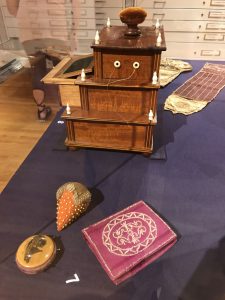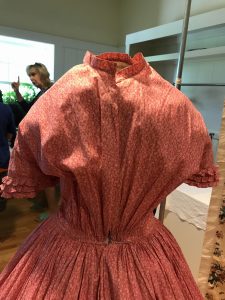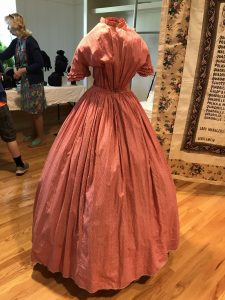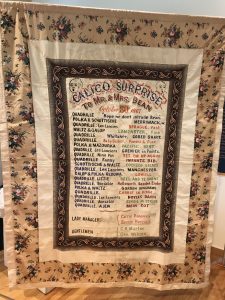I have attended a few Association for Living History, Farm and Agricultural Museums (ALHFAM) annual meetings in the past but have not for some time now. This year it was held at Genesee Country Village & Museum in New York state. A few friends from Texas were going and another presenting and it was within a day’s drive, so I decided to go. I arrive on Thursday evening and the first activity I wanted to attend was on Friday. Actually, there were several activities on Friday that would have been fun but I chose to attend sessions centered around the Susan Greene Collection at the John L. Wehle Gallery at the village.
The gallery houses a few displays as well as the Greene textile collection. One of the larger exhibits in the gallery is an 1870’s carriage designed for pleasure parties. Not the time period I’m usually interested in but it was impressive none the less.
During this first session we were broken up into groups; one group went through the gallery while another went through the costume vault to see what we wanted to see up close in the afternoon, then we switched. The storage is huge, with dresses, bonnets, hats, caps, undergarments, children’s clothing. Since we had limited time I had to concentrate on just what I really wanted and that was the 1860s dresses. The gallery had some wonderful displays; one gallery was all coverlets. Here are some photos from the gallery.
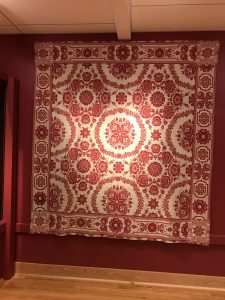
The last part of the morning was a discussion on calico balls. Susan Greene and Patricia Tice, curator of the gallery, happen to both be working on articles on the subject. They had a small display to coincide with their talks.
Mrs. Greene and Ms. Tice provided some great information on calico fabric and the calico balls. I’ll just hit the highlights here.
The Fabric
- In Britain calico meant unbleached muslin; however, in the US calico was used to describe plain weave cotton fabrics printed with large, bold patterns.
- Calico was inferior to other fabrics. It was a low-end fabric and dresses made from it tended to be plain with little or no embellishment. It was meant for dresses that would be washed and, therefore, would not last long.
The Calico Ball
- Calico balls were fund raisers for various causes such as for the poor, widows, or soldiers’ families. The calico dresses were often donated to the poor or working class or the proceeds were donated to charity.
- Calico dresses for these occasions may be elaborately trimmed and trimming removed before being donated.
- At some balls, women would start the evening in calico and then change at midnight remove the calico dress to reveal a nicer dress underneath.
- Prizes were sometimes given for the plainest dress or the neatest made.
- Calico balls continued into the 1940s.
Ms. Tice also provided handouts that included a spreadsheet of calico printing records including year, location, description and price. She included as well a copy of an article from Leslies February 13, 1858 entitled “The Calico Ball at the Academy of Music.”
The afternoon session was devoted to the examination of the originals we had chosen. You can find some pictures of the items I examined along with notes on my blog post about the collection.
So ended day one of ALHFAM 2017.
Categories: Civil War
